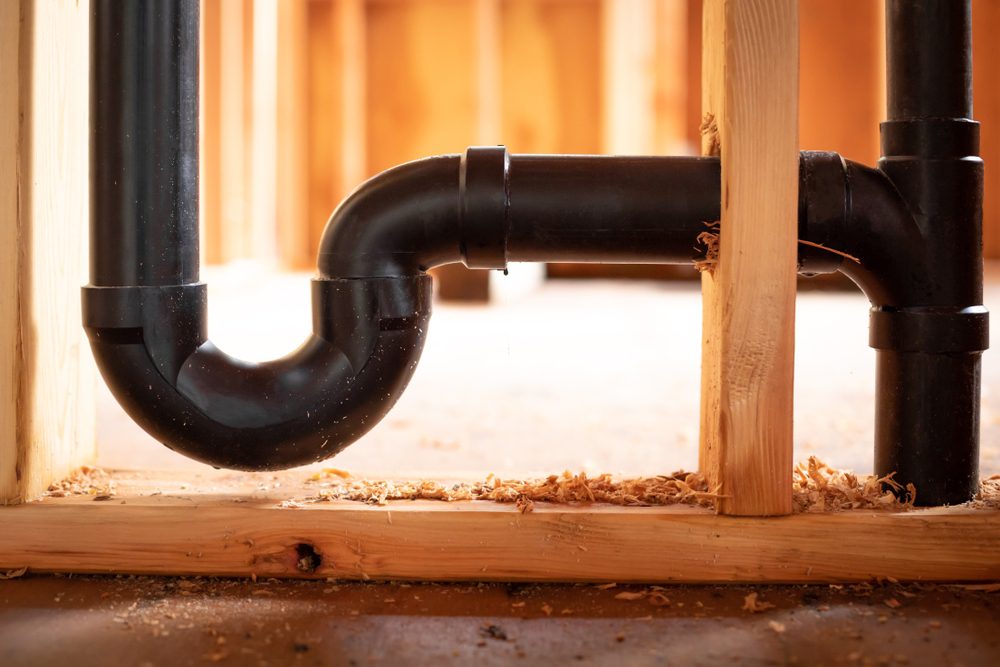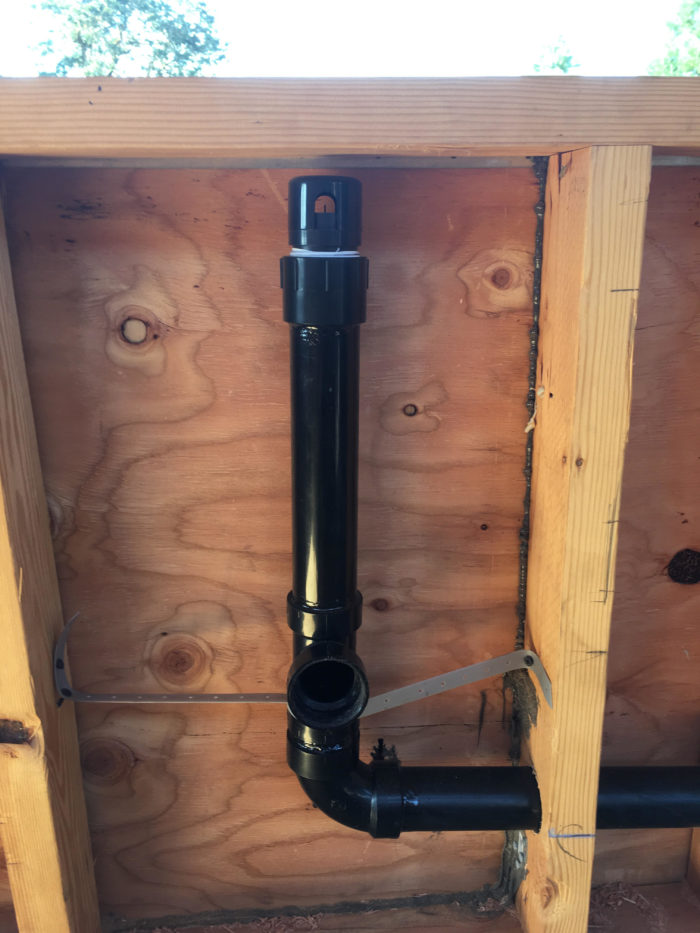Grasping The Value of Adequate Ventilation in Plumbing Systems
Grasping The Value of Adequate Ventilation in Plumbing Systems
Blog Article
We've stumbled on this article about What Are Plumbing Vents and Why Are They Important? below on the net and accepted it made sense to relate it with you in this article.

Appropriate air flow in plumbing systems is often ignored, yet it is critical for maintaining the performance and safety of your home's plumbing. Air flow aids regulate atmospheric pressure, avoid the build-up of hazardous gases, and make sure the reliable elimination of waste. In this guide, we will explore the importance of appropriate pipes air flow, exactly how it functions, and the advantages it gives your plumbing system.
Comprehending Ventilation in Plumbing
Ventilation in pipes describes the network of pipelines that enable air to stream with the water drainage system. These vents serve multiple functions, consisting of managing air pressure within the pipes, protecting against sewer gases from going into the home, and helping in the smooth flow of wastewater.
Exactly How Air Flow Functions in Pipes Solutions
Air Pressure Guideline
Proper ventilation preserves balanced air pressure within the pipes system. When water flows through pipes, it displaces air. Without sufficient ventilation, this displacement can create negative stress, leading to slow drains pipes or siphoning of water from catches, which can trigger unpleasant odors to permeate right into the home.
Stopping Drain Gas Accumulation
One of one of the most essential features of plumbing vents is to stop drain gases, such as methane and hydrogen sulfide, from building up within the home. These gases can pose severe health threats and are extremely combustible. Vent pipes permit these gases to leave securely outside.
Aiding in Waste Removal
Air flow aids in the efficient removal of wastewater by avoiding airlocks in the drainage system. When air can flow openly through the vents, it permits water and waste to stream efficiently via the pipelines, minimizing the risk of obstructions and backups.
Types of Pipes Vents
Main Heap Vent
The main pile air vent, likewise known as the vent pile, is the primary air vent in a plumbing system. It prolongs from the major drain align via the roofing system, permitting gases to escape and fresh air to go into the system.
Branch Vent
Branch vents attach to the major pile air vent and offer private fixtures, such as sinks, toilets, and showers. These vents ensure that each fixture has adequate ventilation to operate properly.
Air Admission Shutoff (AAV).
An Air Admission Valve (AAV) is a one-way valve that permits air to get in the plumbing system without the demand for a conventional air vent pipeline expanding via the roofing system. AAVs are frequently utilized in restorations or areas where installing a basic vent is not practical.
Indications of Poor Ventilation in Pipes.
Slow Draining Fixtures.
If your sinks, bathtubs, or toilets are draining pipes slowly, it could be an indicator of poor air flow. Insufficient air circulation can produce a vacuum effect, making it hard for water to drain pipes appropriately.
Gurgling Seems.
Gurgling sounds originating from drains are commonly an outcome of air being drawn through water traps because of adverse stress in the pipelines. This is a clear indicator of insufficient ventilation.
Undesirable Smells.
Drain smells inside your home are a warning that your pipes system is not appropriately ventilated. This can suggest that sewage system gases are not being effectively aired vent outside, bring about possibly unsafe problems.
Usual Air Flow Blunders.
Poor Vent Sizing.
Making use of small vent pipes can lead to poor air circulation and stress discrepancies in the system. It's important to use vents that meet the details demands of your plumbing system.
Improper Vent Positioning.
Putting vents too much from the fixtures they serve can lower their effectiveness. Appropriate placement makes sure that air can flow openly and efficiently with the system.
Ignoring Code Demands.
Building regulations supply details standards for plumbing ventilation. Ignoring these codes can result in a system that fails to function appropriately and may result in expensive fixings or carcinogen.
Benefits of Correct Ventilation.
Enhanced System Effectiveness.
Effectively aerated pipes systems run more efficiently, with fewer clogs, faster draining, and much less pressure on the pipelines. This performance prolongs the life expectancy of the pipes system.
Improved Air Quality.
By stopping sewage system gases from entering your home, correct air flow contributes to better indoor air quality, making your living environment healthier and more comfy.
Stopping Water Damage.
Adequate air flow assists avoid water from being siphoned out of traps, which can bring about sewage system gases getting in the home and triggering water damages gradually.
Steps to Ensure Proper Air Flow.
Consulting Pipes Codes.
Always consult neighborhood pipes codes when developing or modifying your pipes system. These codes offer the essential standards for proper airing vent and ensure your system fulfills safety criteria.
Regular Examination and Maintenance.
Normal evaluations can aid identify prospective air flow issues prior to they come to be major issues. Upkeep jobs, such as cleaning vent pipes and checking for blockages, are important for keeping the system in good working order.
Expert Setup.
For new installations or major modifications, it's wise to hire a professional plumbing. They have the know-how to ensure the ventilation system is correctly designed and installed according to code.
Verdict.
Correct ventilation is a vital part of any type of plumbing system, guaranteeing that it operates efficiently and safely. By recognizing the importance of ventilation, acknowledging the indicators of inadequate ventilation, and taking steps to maintain your system, you can stop pricey concerns and shield your home's air quality.
What is a Plumbing Vent and it's used for?All plumbing systems in residential and commercials construction have a plumbing vent. It doesn’t just vent unwanted odors from the drainage system to the outside; it actually serves an important purpose by supplying air to the system.
The plumbing drainage system is actually called a drainage, waste and vent (DWV) system. When water flows down the piping, an air supply (vent) is needed to allow the water to flow. Think of the vertical pipe as a drinking straw. If you plug the top end of a straw, liquid won’t drain from it.
The DWV system in your building consists of a series of pipes connected to each fixture; they extend above each fixture, and the system terminates at an open pipe that extends through the roof. This piping allows air into the system and prevents unbalanced pressures in the piping.
?The vent also prevents the system from drawing water out of a trap at the fixture with the characteristic “glug-glug-glug” as the drain gasps for air. Plumbing traps should drain smoothly and never “glug” or gasp for air.
If you have a drain that empties slowly or gurgles as it drains, this may indicate a venting problem. If you flush a toilet and the sink gurgles, there’s definitely a vent problem. It is good idea to have a Plumber check this.
https://www.ameliashomeinspection.com/blog/what-is-a-plumbing-vent-and-its-used-for

We had been made aware of that article on Essential Plumbing Vent Pipes: Understanding Their Role through a good friend on another web page. Enjoyed our write up? Please share it. Help others find it. Thanks a lot for going through it.
Book Inspection Report this page